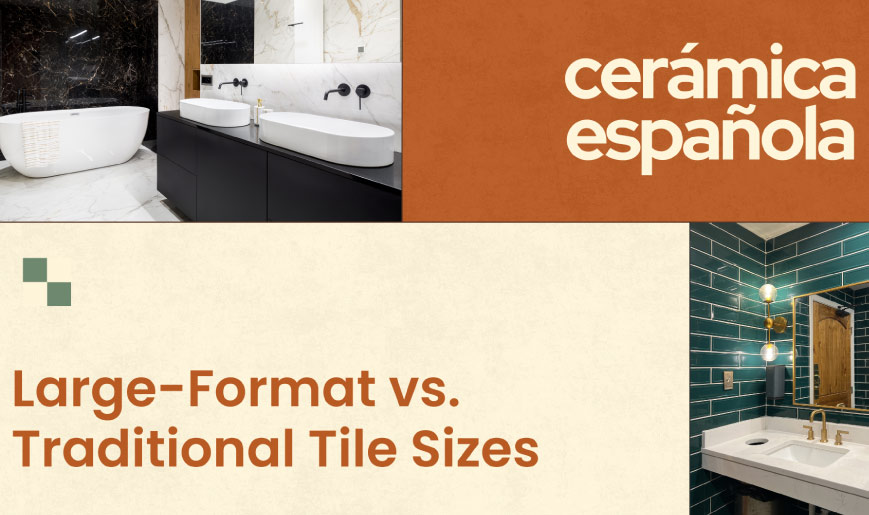
When planning a renovation or new build, one of the most impactful design choices you’ll make is the size of the tiles. While colour, texture, and finish matter, tile size plays a major role in shaping the mood, proportion, and overall feel of a space. At Ceramica Española, we offer a wide range—from traditional 20×60 cm tiles to dramatic 120×120 cm large-format slabs—giving you endless options to suit your style. But the big question remains: where should you use large-format tiles, and where do traditional sizes work best?
Large-Format Tiles: Sleek and Contemporary
Large-format tiles, typically 80×80 cm, 100×100 cm, or even 120×120 cm, are gaining popularity in modern homes and commercial spaces. Their appeal lies in their clean, uninterrupted look, thanks to fewer grout lines.
Where They Work Best:
-
Spacious Living Rooms & Open Floors
Large-format tiles visually expand space, creating a seamless flow that feels elegant and luxurious. -
Bathrooms with Minimalist Design
Fewer joints mean less visual clutter—perfect for spa-like bathrooms. -
Commercial Spaces & Showrooms
Their expansive surface creates a modern, professional look while being durable for high-traffic use.
Pros of Large-Format Tiles:
-
Seamless and sophisticated aesthetic.
-
Easier maintenance (less grout to clean).
-
Can make smaller spaces appear larger when installed correctly.
Things to Consider:
-
They require a perfectly level surface to prevent lippage (uneven edges).
-
Professional installation is recommended due to their size and weight.
Traditional Tile Sizes: Versatile and Timeless
Traditional tiles—think 30×30 cm, 40×40 cm, or 20×60 cm—have been used for generations, and for good reason. They are versatile, cost-effective, and easier to handle during installation.
Where They Work Best:
-
Kitchens & Backsplashes
Smaller tiles or medium-sized rectangular tiles are perfect for intricate patterns and tight areas. -
Compact Bathrooms
Traditional tiles are easier to cut and fit around fixtures. -
Accent Walls & Decorative Features
Smaller tiles allow for creative layouts such as herringbone or mosaics.
Pros of Traditional Tile Sizes:
-
Easier to install and replace if damaged.
-
More flexibility for detailed layouts.
-
Lower installation costs compared to large-format tiles.
Things to Consider:
-
More grout lines can mean more maintenance.
-
They may not deliver the same expansive, modern feel as large formats.
Finding the Balance
Ultimately, the choice isn’t about one being better than the other—it’s about where and how you use them. Many interior designers recommend a combination:
-
Use large-format tiles on floors and wide surfaces for a sleek, expansive look.
-
Use traditional tiles for walls, backsplashes, and areas that require more detail or intricate layouts.
This balance allows you to achieve both sophistication and practicality in your space.



